On this page are the nine sculptures I completed in Fall 2006. These were done in two separate bronze pours. These pictures show the pieces not completely polished, but will be replaced by other pictures when polishing is done.
On another page I have shown trefoil knots I have made of bronze and of steel, both where the trefoil knot has a cross-section which is a rectangle that twists to make a moebius strip. I have now made a smaller trefoil knot whose cross-section is a hypocycloid, the curve made by a point on a circle rolling without slipping inside another circle with radius three times the radius of the rolling inner circle. Think of the spirograph toy. This hypocycloid looks like a concave triangle, so there are three sides going around the trefoil knot, but they twist, so that one side runs into the next one, and they make just one side going three times around the knot. Of course, the same can be said of the edge made by the vertices of the hypocycloid. In order to make the cross-section and keep it uniform, I actually made 140 thin wax hypocycloids by using a custom made cookie cutter, and strung them on a guiding bronze wire, which I had bent into the trefoid knot. Then I arranged them to twist around evenly, and then smoothed them into a continuous surface by adding wax and partially melting the surface. To display the hypocycloid trefoil knot and allow it to sound when struck, I mounted it on a base made from a piece of the Oregon black walnut which I used in some of my kinetic sound sculptures. It is suspended from a parabolic arc of bronze rod in such a way that it can easily be removed for examination, but when hanging, it can be struck by a short bronze rod which makes it ring like a bell. So in a sense this is also a sound sculpture. This piece has been purchased by Craig Huneke, my good friend and classmate from graduate school at Yale.
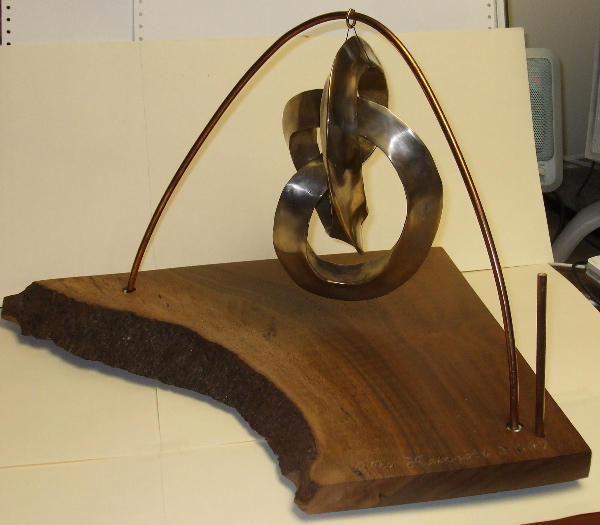
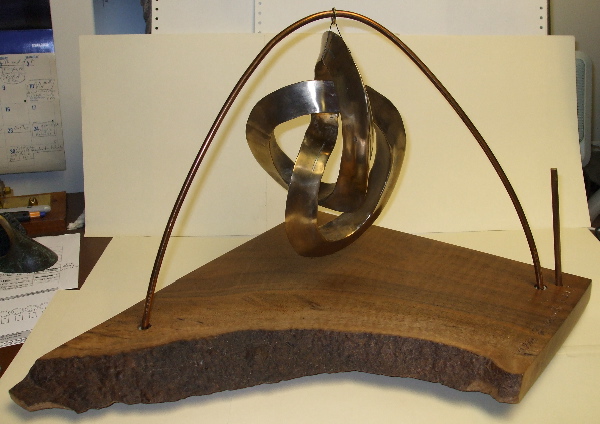
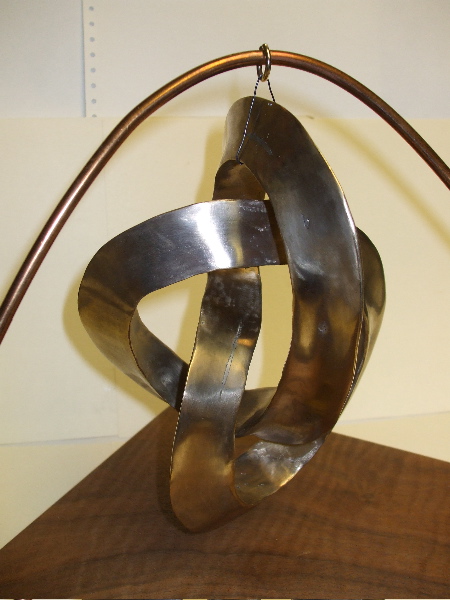
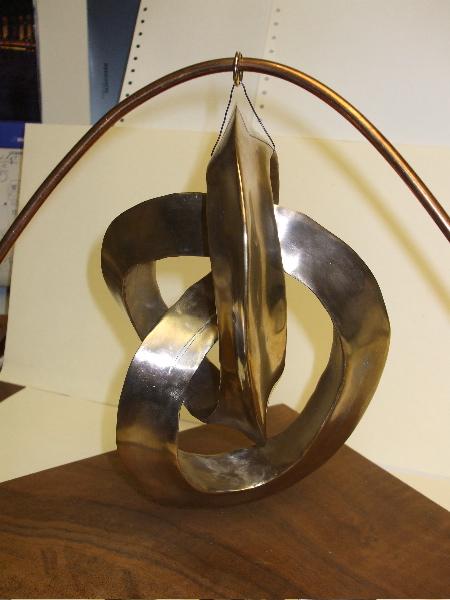
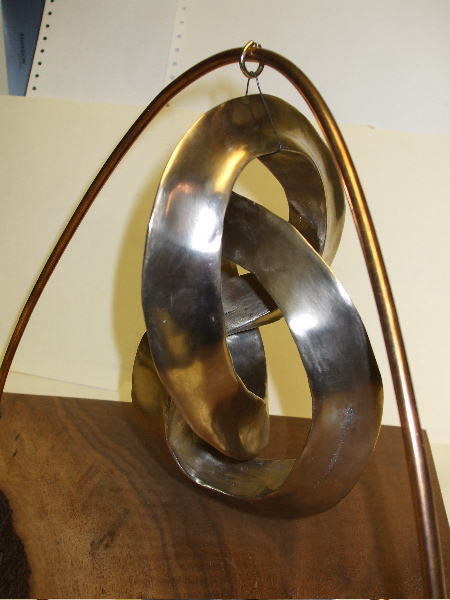
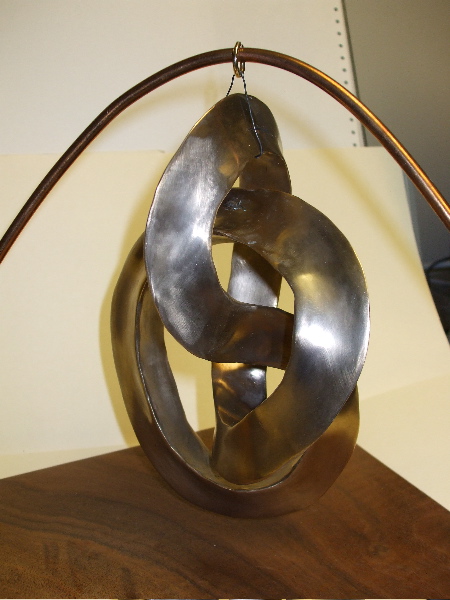
I have made other sculptures based on the hypocycloid cross-section. First I made a wax model of a helix with a hypocycloid cross-section, whose top tapers in towards the center. Then I made another one using a mold, so two of them could go around in each other in a double helix, pointing towards each other at the top. Here are pictures of the wax models, but the final results can be seen on my later webpages.
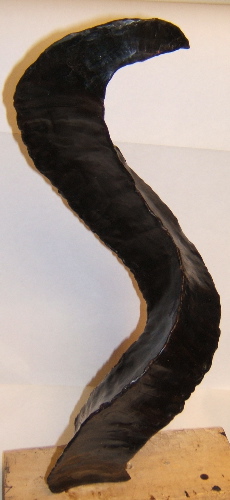
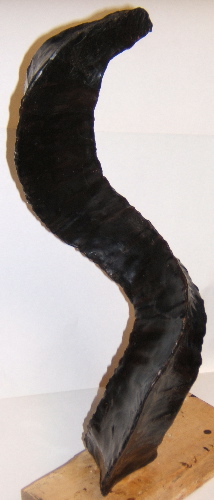
I made another small trefoil knot where there were actually three cylindrical rods going around the knot, and they are twisted so that the first rod runs into the second, the second into the third, and the third back to the first one, making just one rod which goes around three times.
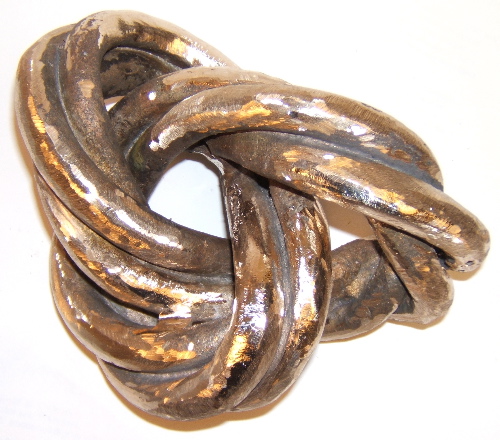
I attempted twice to make a sculpture based on the Borromean rings. The first attempt resulted in a piece where the metal did not completely fill the intended space. The result was a truncated version of the Borromean rings which gives the impression that part of the sculpture is under the surface of the table it sits on. The second attempt also did not fill completely with metal, and required extensive welding repairs to be acceptable.
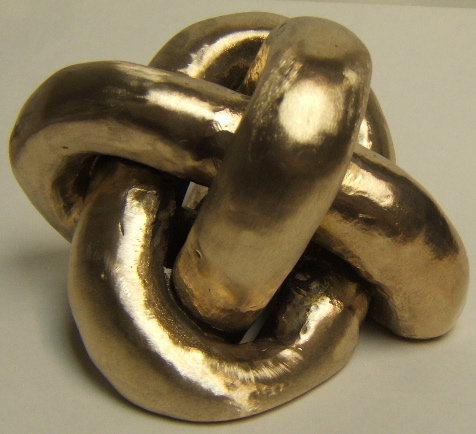
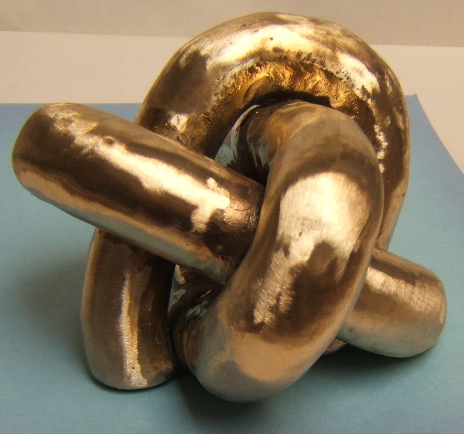
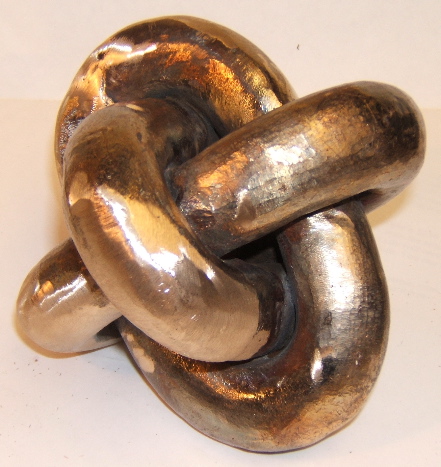
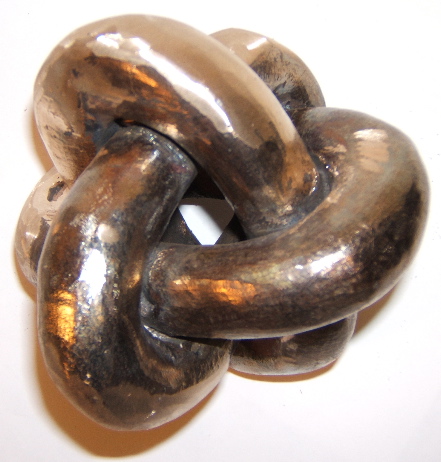
Related to the Borromean rings is this sculpture of three linked rings whose linkage is completely different from those above. And the three circles do not run into each other at all, but are all separate.
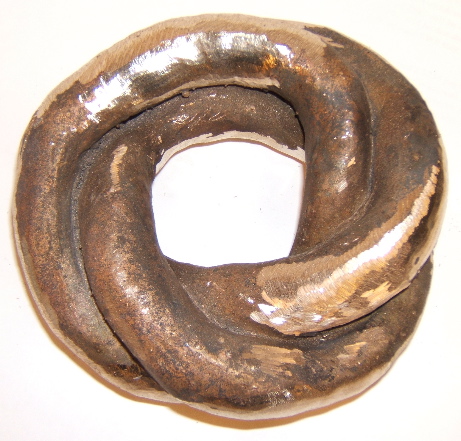
On another page I have a picture of a sculpture made from a torus which has been pierced by six holes, three vertical and three radial, with the surface carved to create certain curves and surfaces going between the holes. The effect being rather heavy and too much like a hubcap, I tried again, this time with four vertical and four radial holes, and with a more twisting pattern of carved surfaces and lines. The wax model for this was dubbed the ``Celtic Tootsie Roll" by my younger daughter, and you can see the bronze that resulted in two views here.
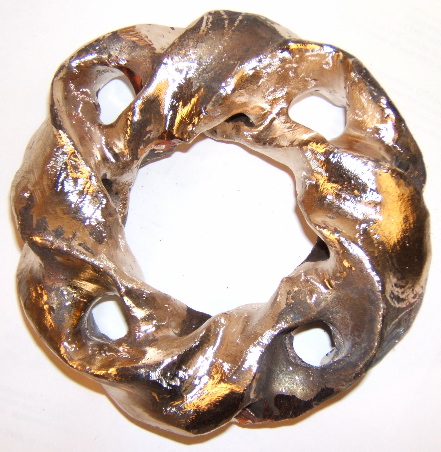
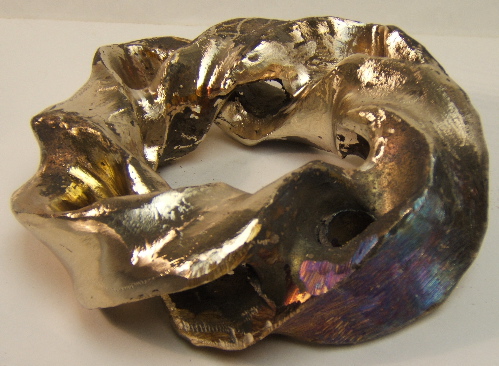
In the following two sculptures you see work directly inspired by Helaman Ferguson, genus 2 surfaces on which have been carved curves which form certain knots. In the first one, there are two unlinked knots, one simple circle going outside both holes in the surface, and another curve that goes through both holes. In the second one, there is a single curve going through both holes, forming a figure eight knot. Ferguson has several versions of the second one which he calls a figure eight knot complement. They say imitation is the highest form of flattery. I thought I could learn something from trying to make some myself. I did. It is hard to make them look good!
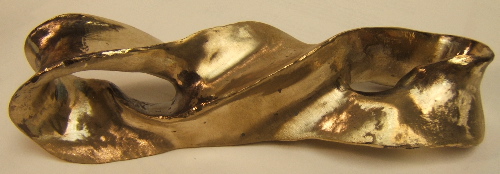
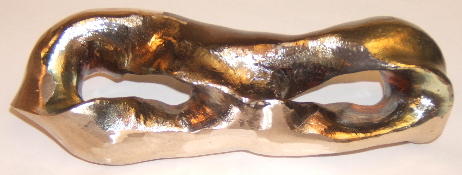
The largest piece I have made, 30 pounds of bronze, was a joint project with my daughter, Judith Feingold, whose paintings and sketches can be found in other webpages on my website. She made one of the devilish faces which occupy the center wave of the piece, which represents hidden spirits in a wave of water. Like the ultra fast photographs of splashes made by water dropping into a pond, this sculpture shows what might be seen by an even faster camera that could capture other-worldly sprites hidden there. This piece required many steps, from clay shaped on a pottery wheel to a plaster cast, to a shell of wax made from the plaster. The faces were made separately and attached to the center.
To see more types of sculpture I have tried, follow the following links:
Links back to:
Webpage of Alex Feingold,
Department of Mathematical Sciences,
Binghamton University.